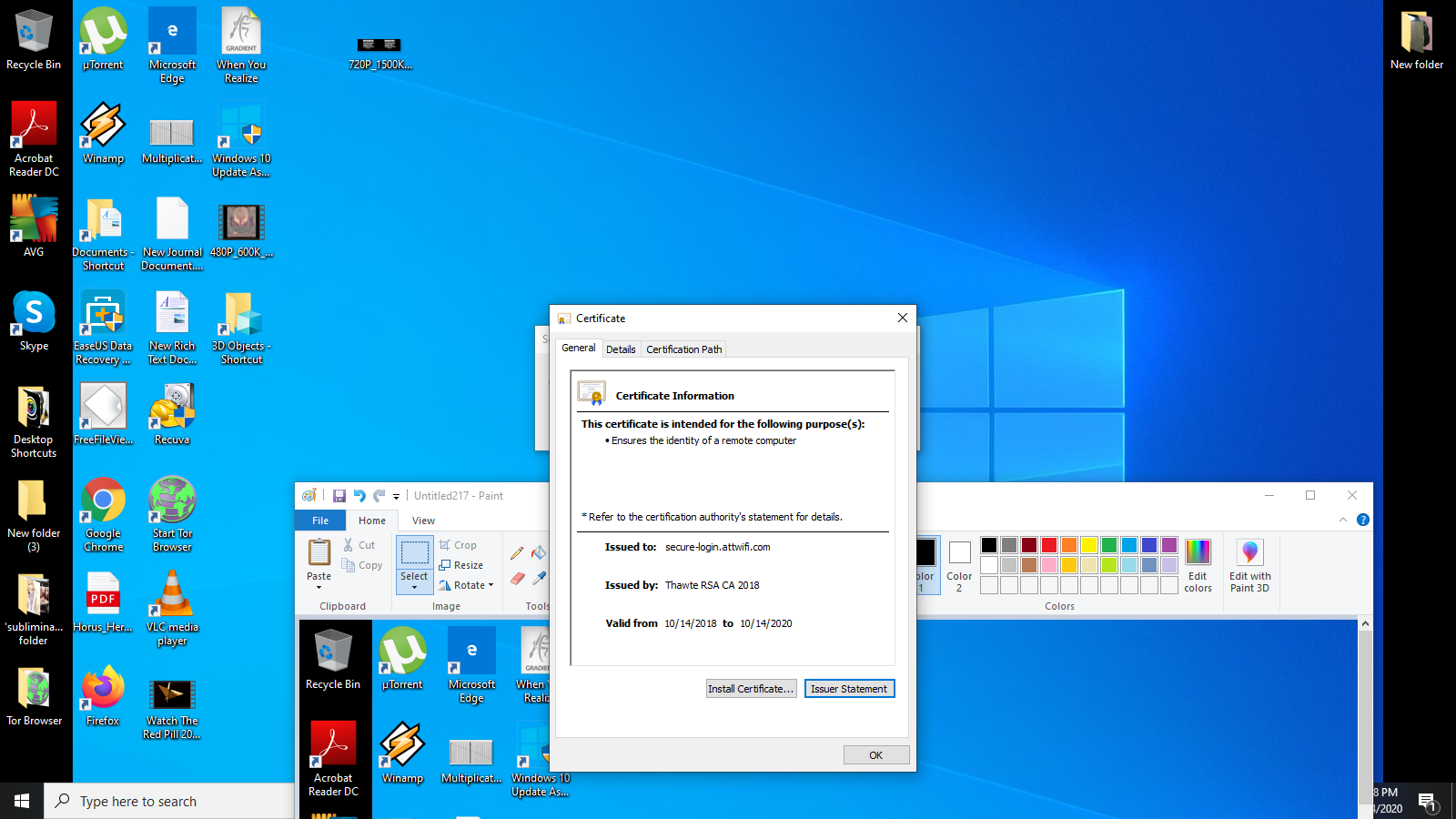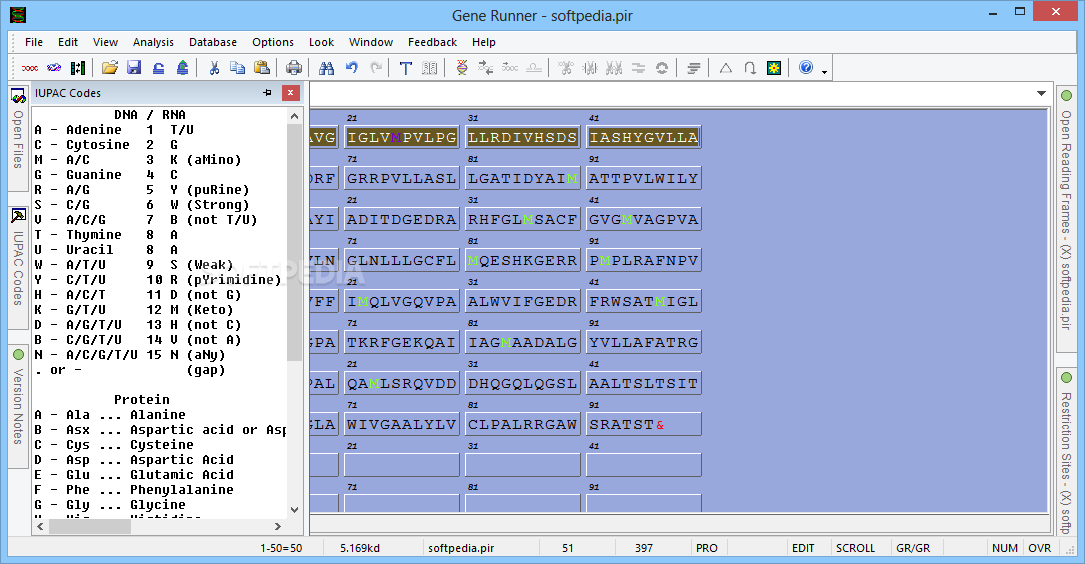Gene Runner Software For Mac Free. 10 GeneMapper® Software 5 Installation and Administration Guide Obtaining Information from the Online Help The GeneMapper® Software online help system describes the GeneMapper Software and provides procedures for common tasks. Access online help by clicking in the toolbar of the GeneMapper window, selecting. In the next step, the selected 1000-bp region was assessed with Gene Runner software; we discovered that another restriction site (RS), which could be digested with MspA1I, is located 30 bp to 36 bp downstream of IFNL4 rs368234815 polymorphism and can potentially affect the digestion step.
Abstract
Background:
Tuberculosis (TB) is the leading cause of death by infectious diseases worldwide, and especially prevalent in developing countries. Several vaccines against TB have been developed, recently. The aim of the present study was to design and construct a cloning vector encoding Mycobacterium tuberculosis (MTB) mpt51 gene.
Methods:
DNA was extracted from MTB H37Rv strain. Gene-specific primers were designed using Gene Runner software and the mpt51 gene was amplified by PCR. The amplified fragment and pcDNA3.1(+) cloning vector were both digested with restriction enzymes, the mpt51 fragment was ligated into the vector, and the Escherichia coli (E. coli) TOP10 strain were transformed by the recombinant plasmid. Positive clones were identified by colony PCR, restriction enzyme digestion, and DNA sequencing.
Results:
The mpt51 gene was successfully cloned into pcDNA3.1(+). A 6400 bp band for the pcDNA3.1(+)/mpt51 recombinant plasmid and a 926 bp band for mpt51 were observed by colony PCR, and restriction enzyme digestion on agarose gels. The DNA sequence was 100% homologous with the mpt51 fragment of H37Rv in GenBank.
Conclusion:
In the current study, the mpt51 gene of MTB was correctly cloned into pcDNA3.1(+). The expression of this recombinant vector can be studied in eukaryotic cells. Moreover, it is possible to determine the efficacy of this vector as a DNA vaccine candidate, and to test its protective function compared to BCG in animal models in future.
Introduction
Tuberculosis (TB) is an old contagious disease caused by Mycobacterium tuberculosis (MTB) (, 2), with a high mortality rate. According to the World Health Organization estimations, approximately one-third of the world’s population are infected with MTB, and more than 2 million people suffer from active TB (3-). Besides, TB causes near 3 million deaths annually (). In general, TB is a chronic disease with slow progression mostly remain undiagnosed for decades. The common form of TB in adults is chronic pulmonary disease, while extra-pulmonary TB is especially common in children and HIV-co-infected patients (). A successful tuberculosis control program requires the identification of appropriate cases and the ability to categorize the exact disease situation, due to the lack of full understanding of known immune responses to the disease (, ). The only available vaccine for human TB is Bacillus Calmette–Guérin (BCG) (, ). According to the vaccination program, BCG is injected immediately after birth or after the first day of exposure to MTB (). Although BCG administration to infants has been found to be effective against severe childhood TB in endemic regions, its protection declines gradually with time and may last less than 15 years. This results in highly variable efficiency that seems insufficient to control pulmonary TB in adults (, , ). In 1992, Tang and colleagues showed that injection of DNA induced immune responses (, ). In many studies, it has been observed that DNA vaccines containing MTB antigens induce protection against primary TB infections. Also these vaccines have been used as boosters after BCG vaccination to enhance immune responses (). Antigens such as Hsp60, Hsp70, Ag85, ESAT-6, and CFP10 are new TB vaccine candidates as well as new diagnostic factors (). MPT51 is involved in cell wall and possesses a mycolyltransferase activity, which is required for the biogenesis of trehalosedimycolate, also known as cord factor, a dominant structure necessary for the maintenance of cell wall integrity. It is a secretary component and stimulates humoral and cellular immunity (). The aim of this study was to clone the gene encoding MPT51 (mpt51) in pcDNA3.1(+).
Materials and Methods
DNA extraction
The standard strain of MTB (H37Rv) was obtained from the Shariati Hospital, Mashhad, Iran. The strain was cultured in Lowenstein Jensen medium (Merck) and incubated at 37 °C for 45 days. Three to four colonies were suspended and homogenized in 400 μl of 100 mM (Tris buffer, 0.05% Tween 20, pH 7.5). Then 20 μl of 18.5 mg/ml proteinase K (Fermentas) was added and incubated at 55 °C for 3 hr. To inactivate the enzyme and DNA extraction, samples were boiled for 10 min and then centrifuged at 21952 g. The supernatant containing the DNA was collected and stored to be used for PCR amplification.
Polymerase chain reaction for mpt51 amplification
Mpt51-specific primers were designed using Gene Runner software. The PCR mixture contained the following ingredients: 10 pmol/µl of each forward (mpt51-F: 5'-AGATAAGGATCCACCATGGGAAGGGTCGGTCGGCGCT-3') and reverse (mpt51-R: 5'-TCGGCAGAATTCTTAGCGGATCGCACCGACGATATCGC-3') primers (Cinnagen), 1 μl (100 ng) of DNA sample, 25 mM MgCl2 (Cinnagen), 10 mM of each dNTP (Fermentas), and 5 U/µl of Taq DNA polymerase (Cinnagen). The final reaction volume was 25 μl. The first cycle of the PCR was 5 min at 95 ° C followed by 40 cycles of one min at 95 °C, 1 min at 58 °C, and 1 min at 72 °C followed by a final cycle of 10 min at 72 °C. Then, total PCR product was electrophoresed on a 1% agarose gel. The amplified mpt51 fragment was purified with a gel purification kit according to instructions provided by the manufacturer (Bioneer Gel purification kit).
Cloning of mpt51 into pcDNA3.1(+) vector
Both the purified PCR product and pcDNA3.1(+) were digested with EcoRI and BamHI restriction enzymes (Fermentas), electrophoresed, purified from the gel using a gel extraction kit (Bioneer Gel purification kit,), and ligated with T4 DNA ligase (Fermentas Company). Competent E. coli strain TOP10 cells were prepared using the cold solution of CaCl2/MgCl2 (0.1 M) as previously described (, ). The cells were transformed using heat shock, and cultured on LB agar containing 100 µg/ml ampicillin () for 16 h at 37 °C.
Confirmation of mpt51 cloning into pcDNA3.1(+) vector
Cloning of mpt51 into pcDNA3.1(+) was confirmed by colony PCR using mpt51-specific primers, enzymatic digestion with EcoRI, and DNA sequencing.
Results
Figure 1Figure 1 shows the result of the electrophoresis of the PCR product. It demonstrates a single band of 926 bp related to mpt51 gene of interest.
The figure shows an agarose gel of the mpt51PCR product; M: 100 bp DNA size marker (Pars Tous Cat No: DM01-01); C: negative control; 1: 926 bp mpt51 PCR product.
Transformed colonies were identified by colony PCR, which amplified a 926 bp product and digestion with EcoRI (not shown).
The recombinant vector was sequenced (Macrogen) and the mpt51 sequence was found to be 100% homologous with the mpt51 fragment of H37Rv in GenBank.
Discussion
BCG vaccine is the only vaccine against tuberculosis that is available. In many countries, this vaccine has made children well-immune, but has not been effective in adults especially against pulmonary TB (). Efforts have been made to find drugs and vaccines against TB based on identifying new MTB antigens. Complete understanding of the cell wall component of MTB was a great help in introducing these antigens (, ). A cell wall protein of MTB named MPT51 along with the antigen 85 complex contributes to a high affinity to fibronectin. This antigen also plays a role in the synthesis of trehalose. It is also essential to maintain the integrity of the cell wall ().
The secreted protein MPT51 is a major protein in culture filtrates of Mycobacterium bovis BCG and immunologically cross reacts with the fibronectin-binding 85 complex secreted by this bacterium. Ag85 complex molecules encode proteins to bind fibronectin and to activate mycoyl transferase which are involved in the final stage of assembly of mycobacterium cell walls. Ag85A and Ag85B have been shown to stimulate cellular and hemorrhagic immunity. Immunity against these antigens can protect animal models against pulmonary tuberculosis. MPT51 which is dependent on the complex of antigen 85 can also provide protective responses against pulmonary tuberculosis ().
As it was shown that MPT51 is an immunodominant antigen; the use of the mpt51-based serodiagnostic assay could serve as an addendum to sputum microscopy for even confirming the conventional diagnosis of pulmonary TB ().
In the present study, mpt51 of MTB was cloned into pcDNA3.1(+), which contains the human cytomegalovirus (CMV) promoter. This promoter allows high expression of recombinant proteins. In this way, this feature can also be used to provide subunits for protein vaccines.
The accuracy of cloning was confirmed by colony PCR using mpt51-specific primers, enzymatic digestion with EcoRI, and DNA sequencing. The ability of the vector to express protein will be determined in future studies, and it will also be examined as a DNA vaccine candidate to induce effective immune responses.
Acknowledgements
This work was supported financially by the Mashhad University of Medical Sciences, Mashhad, Iran.
References



Analyze sequence files or create new ones, choosing from a wide variety of categories, such as Amino acids, Methylases and Suppressors
Gene Runner is a professional application aimed at providing geneticists and biologists with a reliable tool that can help them conduct gene analysis with ease.
The application requires SEQ format files that contain genetic information, which can then be analyzed using the 'ORF' (Open Reading Frame) button, that enables users to set the preferred Nucleotides or Amino Acids size, as well as select the 'Translation Table' to work with. After opening the ORF item, users can make various annotations for each entry.
Gene Runner Software Program
The 'Restriction Analysis' function of Gene Runner enables users to only check a portion of the DNA sequence, by entering the preferred cut sites. In addition, they can analyze all enzyme types or only the palindromic / non-palindromic ones. This function also offers users the option of setting a precise analysis region and discarding the overhangs.
With the 'Oligo Analysis' function, users can select a small section, of twenty to thirty bases, click on the 'Oligo' button and obtain a detailed description of it, including all its properties.
The 'Sequencing and Hybridization Analysis' feature allows users to display the primer characteristics of the selected DNA portion, or discard certain types of primers.
Gene Runner saves the information on Amino Acids in tables and this data is also be used with the 'Protein Analysis' functions, the 'Suppressor' and the 'Translation Tables'. This is required as Gene Runner will send an error message if the used Amino Acid is not defined in the said tables. In addition, all information concerning these elements is editable, so users can fully adjust their values.
Gene Runner is a great tool for professionals in the field, as well as genetics students, as it provides them with an efficient tool for DNA and RNA sequencing. The only downside of this application is the rather unattractive interface, but the numerous functions and features make up for its flaws.
Filed under
Gene Runner was reviewed by Marina Dan
Gene Runner Software Reviews
- Formatted mult-line copying
Gene Runner 6.5.52 Beta
add to watchlistsend us an update- runs on:
- Windows 10 32/64 bit
Windows 8 32/64 bit
Windows 7 32/64 bit - file size:
- 18.8 MB
- filename:
- grweb.zip
- main category:
- Science / CAD
- developer:
- visit homepage
top alternatives FREE
Gene Runner Software Downloads
top alternatives PAID